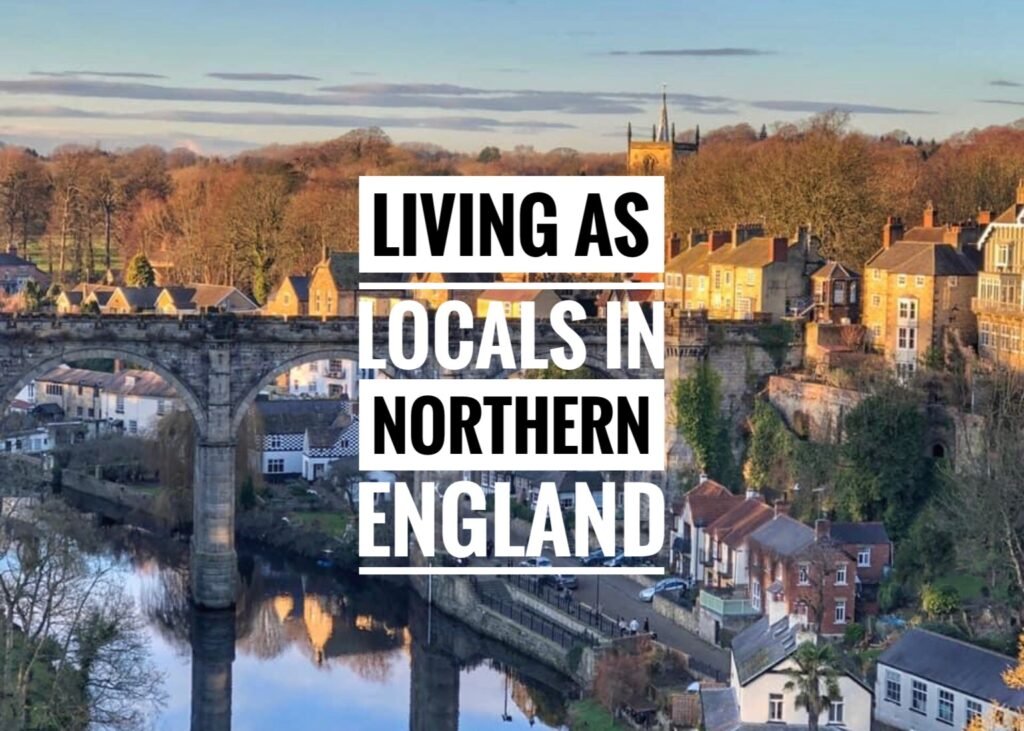
Several years back, we read Bill Bryson’s “Notes from a Small Island.” Since then, we have always been drawn to the idea of living in England as a local, experiencing cultural differences of language and quirks and walking endlessly on countryside footpaths meandering their way to villages with funny names like Follifoot, Poole in Wharfdale, and Bridge-near-the-church-by-the-water. (Yes, that last one is made up!) Thanks to housesitting, as well as gracious friends, it was easy to turn this dream life into a reality.

Knaresborough
From Colne, we took a two hour bus ride northeast to find out next housesit in the city of Knaresborough, a historic market and spa town founded in the late 1200’s. The Nidd River flows gracefully through the town and there is evidence that people have lived in its gorge for over 4,000 years.

Not too shabby of a pad for Greg and Mandy for 17 days! This house (uh, mansion?) had six bedrooms, three fireplaces, and was on a full acre of land, backing up to the forest and river. We watched a loveable ambling geriatric golden retriever named…Abby.
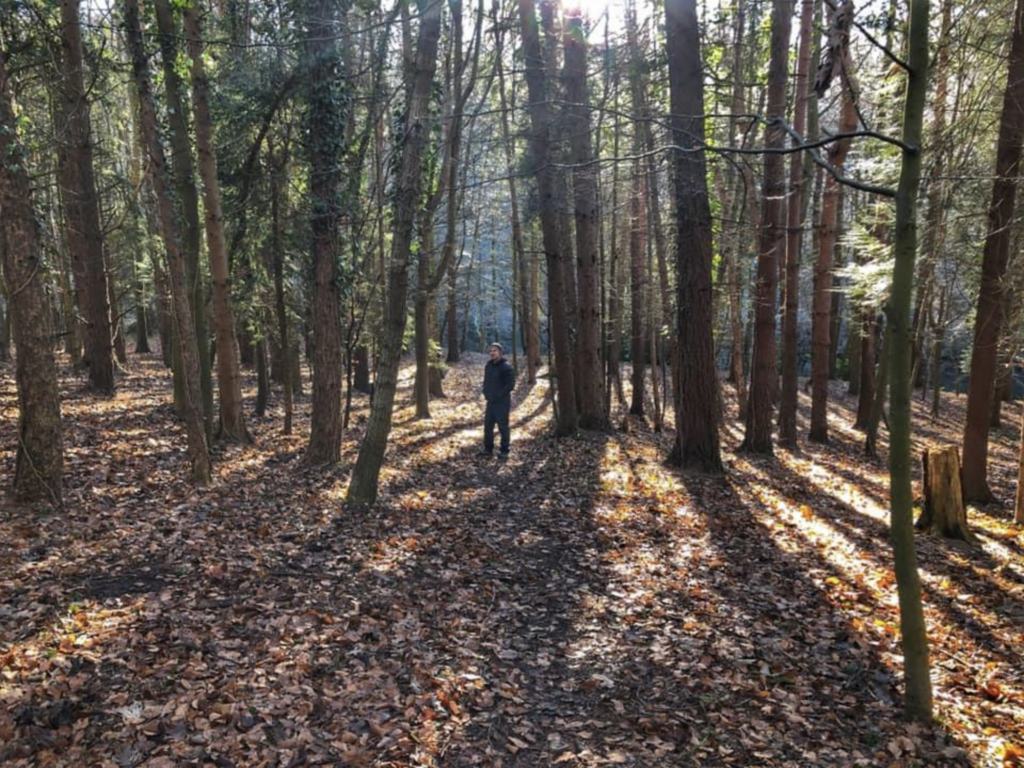
Greg in the forest behind the house.
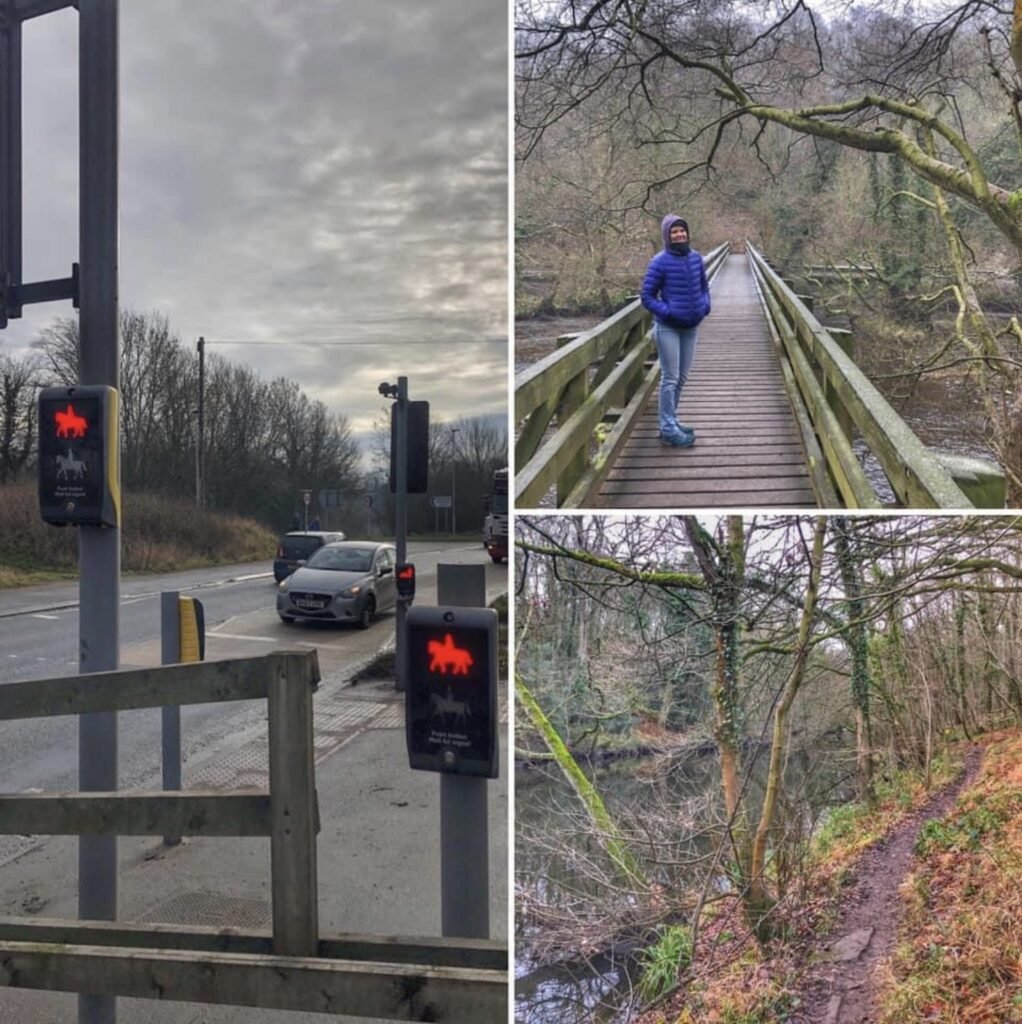
In true English style, we were even able to walk to other towns right off our doorstep, alongside the river. In fact, the Brits are so non-motor vehicle friendly, at one crossing, we even encountered a crossing light that had a blinking sign for pedestrians, bikes and…horses!

On this day, we followed the river Nidd upriver to Ripley Castle. It’s listed as a 14th Century county “house.”

Another castle we of course checked out here was the Knaresborough Castle. Or what’s left of it. Unlike Ripley, this Knaresborough Fortress built in 1301 lay in ruins today. It was largely destroyed in 1648 because of an order from Parliament to dismantle all Royalist castles.
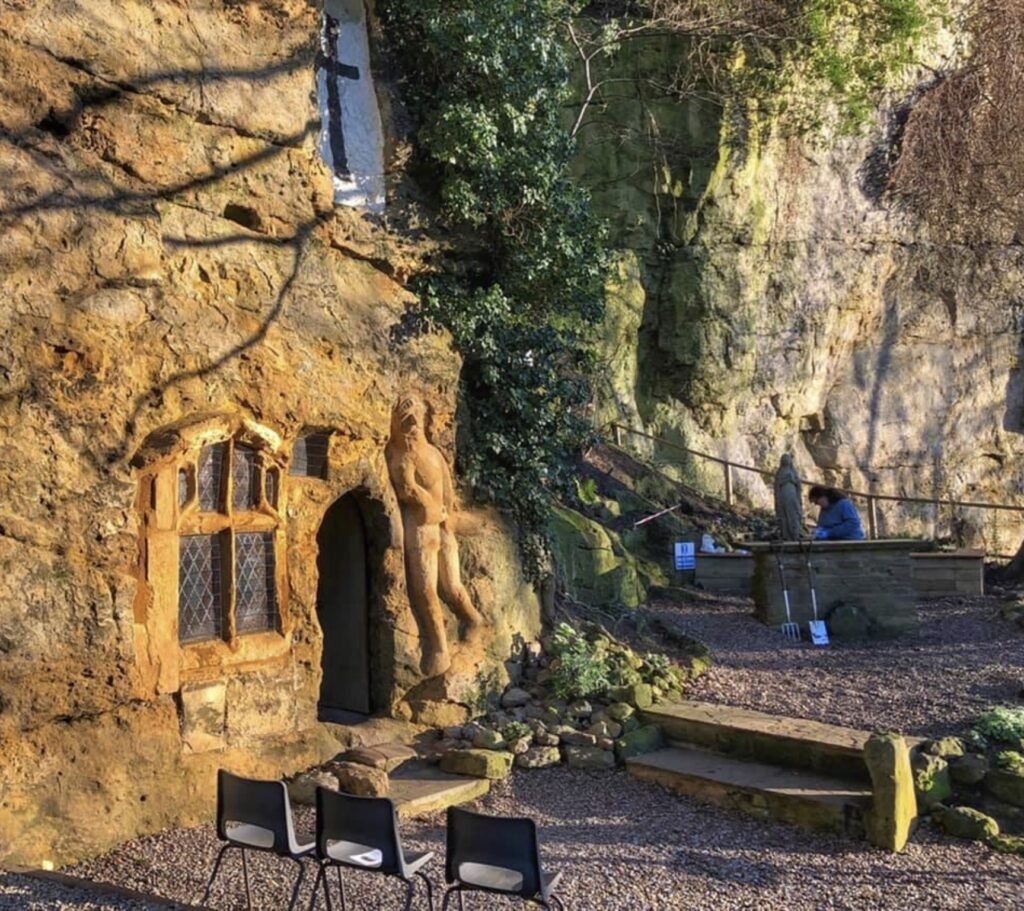

Walking up the Nidd river gorge in Knaresborough, we visited this diminutive secretive church carved out of the rock in 1408. Named the Chapel of our Lady of the Crag, it was supposedly carved by one father as a tribute to God, after a large rock that had broken free and fallen from the cliff above and narrowly missed killing his son. It soon became a pilgrimage stopover site.

Walking the streets of Knaresborough.

A cute bike statue dedicated to the Tour de France, which whizzed through this area in 2014.

This sign is one of the few remaining original signs on the old carriage road that connected Edinburgh and London before they had motorways.

Also in Knaresborough we visited the historic market which still occurs every Wednesday in the square, incredibly operating since 1310. To this day, a town crier still makes announcements of local events and news in the market as everyone gathers round. To set the mood appropriately he began by ringing a bell and shouting “hear ye, hear ye! Your attention please good townsfolk of Knaresborough!” We took full advantage of the market day, snagging very well priced produce, and fruit, some tasty sweets and other “flea market” type goods!

Doing all that shopping we certainly worked up a thirst… and we simply could not walk past a pub as historic and quintessentially British as Blind Jacks Ale House right on the market square. Notice the adorable painted fake window murals. We learned these painted fake windows are quite common in the older buildings in this area because at one point, in a malicious scheme to make extra money, the powers that be decided to charge a “glass tax” for each window in a home. Thus, eager to avoid more taxes, people instead chose to brick up their windows, and later paint windows where they used to be. It’s crazy for us to think, they would prefer to permanently live in less natural light (in England!) just to save some shillings on their windows.

A view from inside the pub onto the square. Loved this lamp!

And when we weren’t at the city market, you could find us doing most of our grocery shopping at Tesco or Marks & Spencer Food. A word about an amazing effort that grocery stores in the U.K. are undertaking… they are really doing their part to help in a world where 1/3 of our food is wasted. The are following an initiative that states they will reduce food waste “from farm to fork” in half by 2030. This translates to amazing discounts on the shelves all the time, we’ve never seen anything like it at the grocery. And it’s not those random discounted items that have questionable practicality/benefit it’s on things that matter most… produce, dairy, breads, meats, and for us healthy and delicious ready made soups and meals at 75-85% off.
For example, this yummy Indian food loaded meal for two was originally 11£ ($14.40) and marked 2.74£ ($3.59) or a pint of tomatoes was marked from 2.50£ down to .33. And, they were even GIVING away bread one night. Whatever doesn’t sell at the end of the day to customers gets given to employees and some gets donated. Of course it’s still not as sustainable as France where there is now a law that large markets are required to donate it to charity. It’s amazing to see some the grocers here are really making an effort to combat the unnecessary waste.
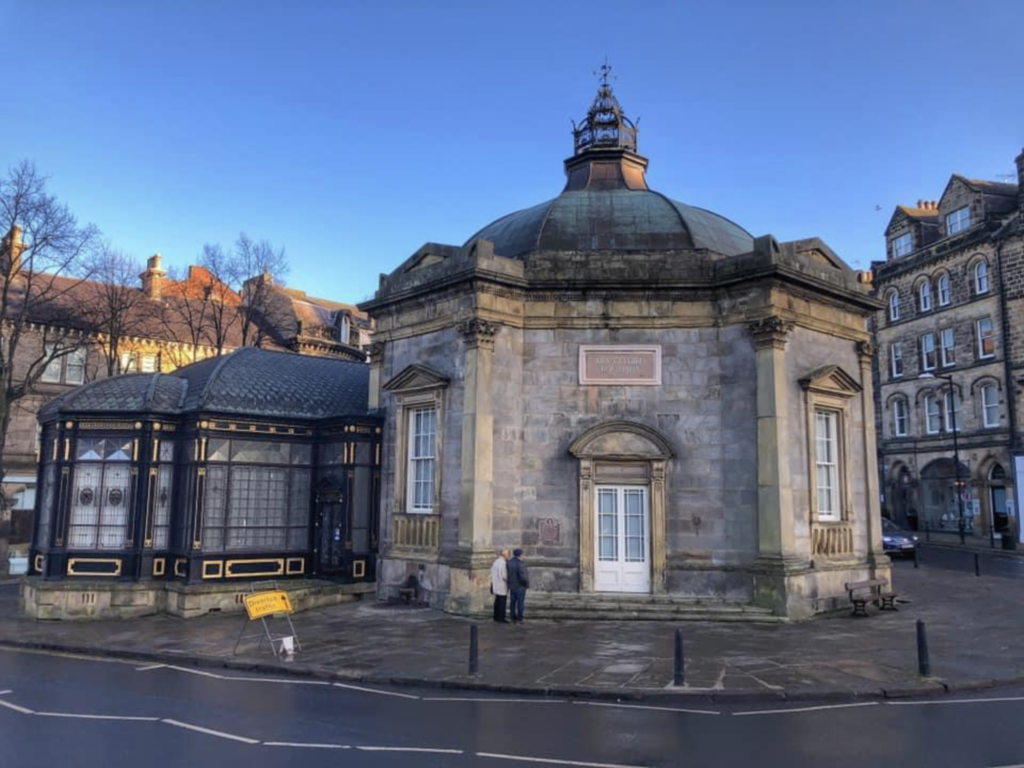
Harrogate
In the nearby spa town of Harrogate, we visited the Royal Pump House, the site of the strongest sulphuric bath well in Europe. And wow! It earned that title! Charles Dickens fittingly described Harrogate as the “queerest place with the strangest people leading the oddest lives.” It seemed pretty normal to us…other than the nose-wrinkling water.

York
Nowhere in northern England boasts a medieval history quite like York so making the 25-minute train journey ($10 RT) was a no brainer. The York Minster built between 1220-1480 has to be one of the most hulking and beautiful Gothic cathedrals we’ve seen.
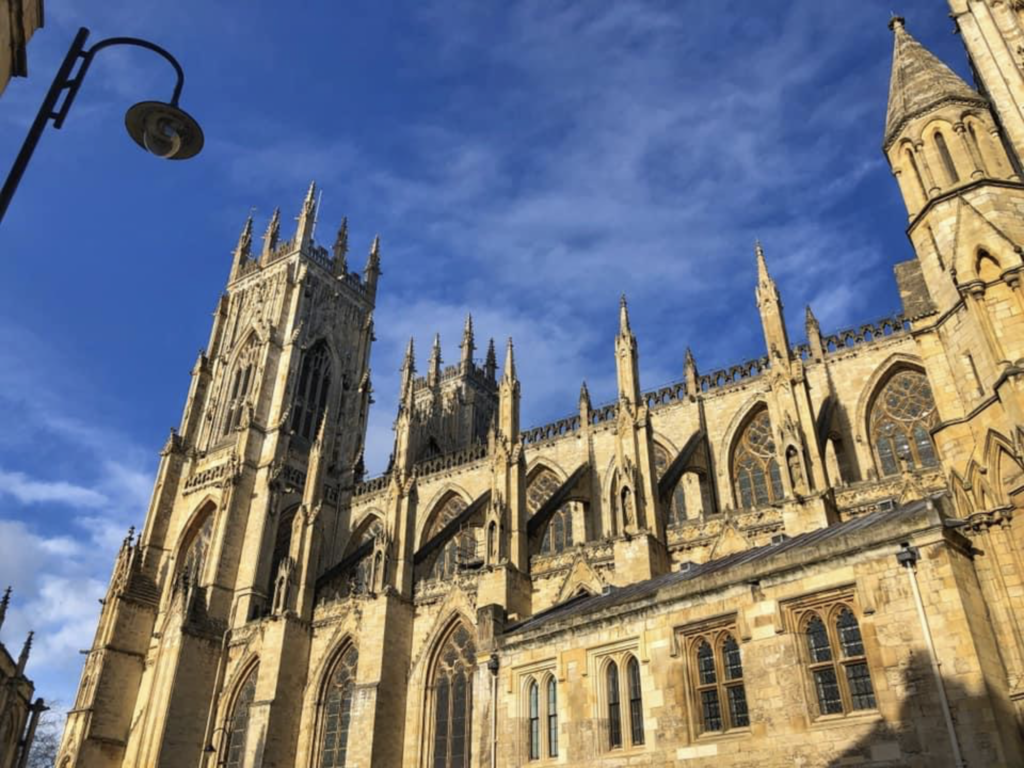
From the side.

A mixed media-looking shot taken from the walls.
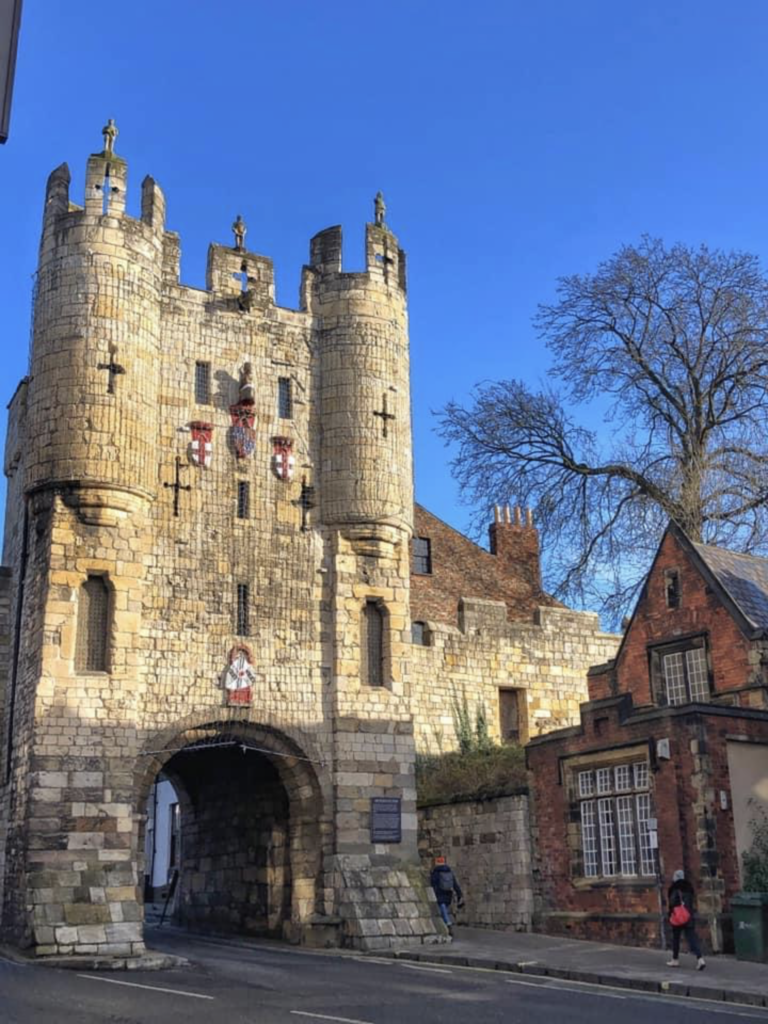
Walking along the perimeter of the ancient city walls is certainly an experience not to be missed! The ornate Mickelgate Bar is a great place to start. Also important to note that Bar means Gate and Gate means street in these parts!
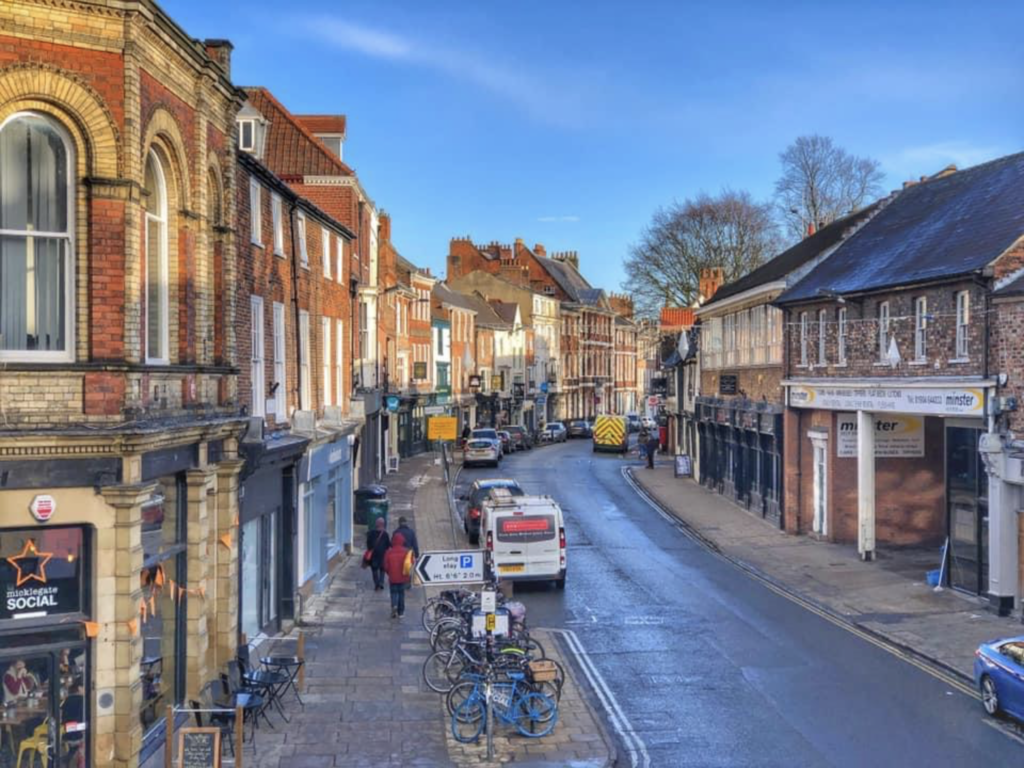
Streets of York as scene from the wall

The remarkably preserved medieval wall from 12th-14th century stretches an astounding 4.5 miles around the old town, the longest in England. The original walls in place here were built by the Romans in 71 AD! It was beyond fun to stroll around the perimeter of this wall.
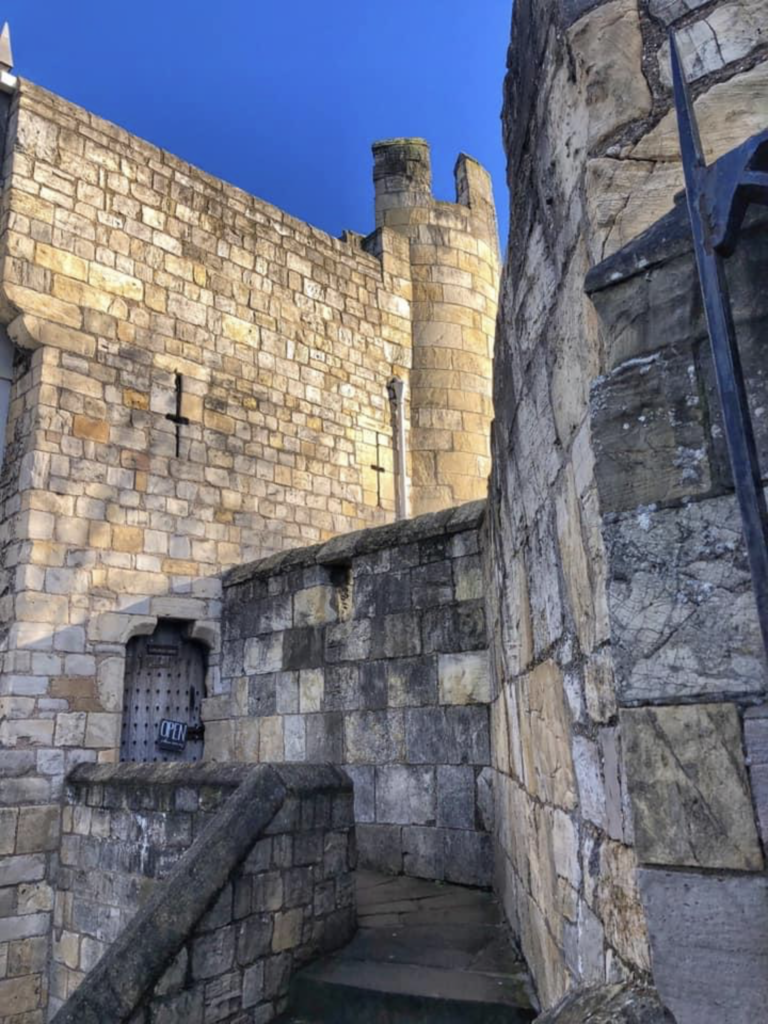
They’ve brilliantly turned the tops of the bars (gates) into cafes and bars (pubs). Still with us? 😉
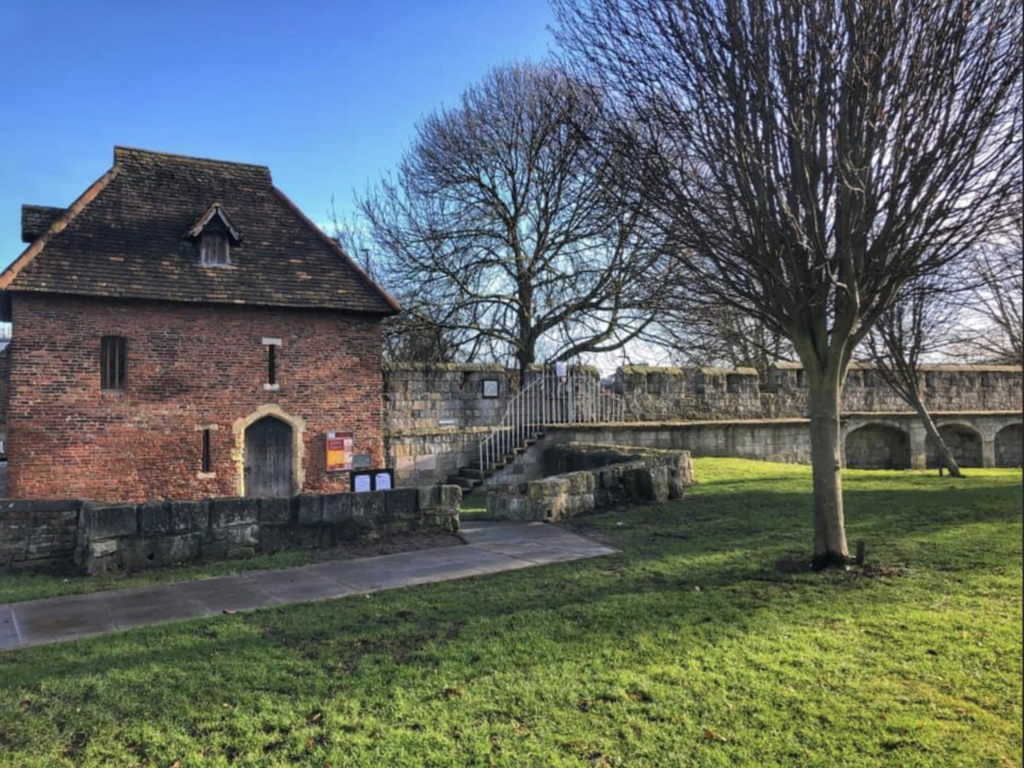
Here you can see a section of the wall with the Red Tower, built in 1490, which forms the only brick section. Because it was built of brick its construction did not sit well with the local stone masons.

Another tower turned into a coffee shop, crossing the river.
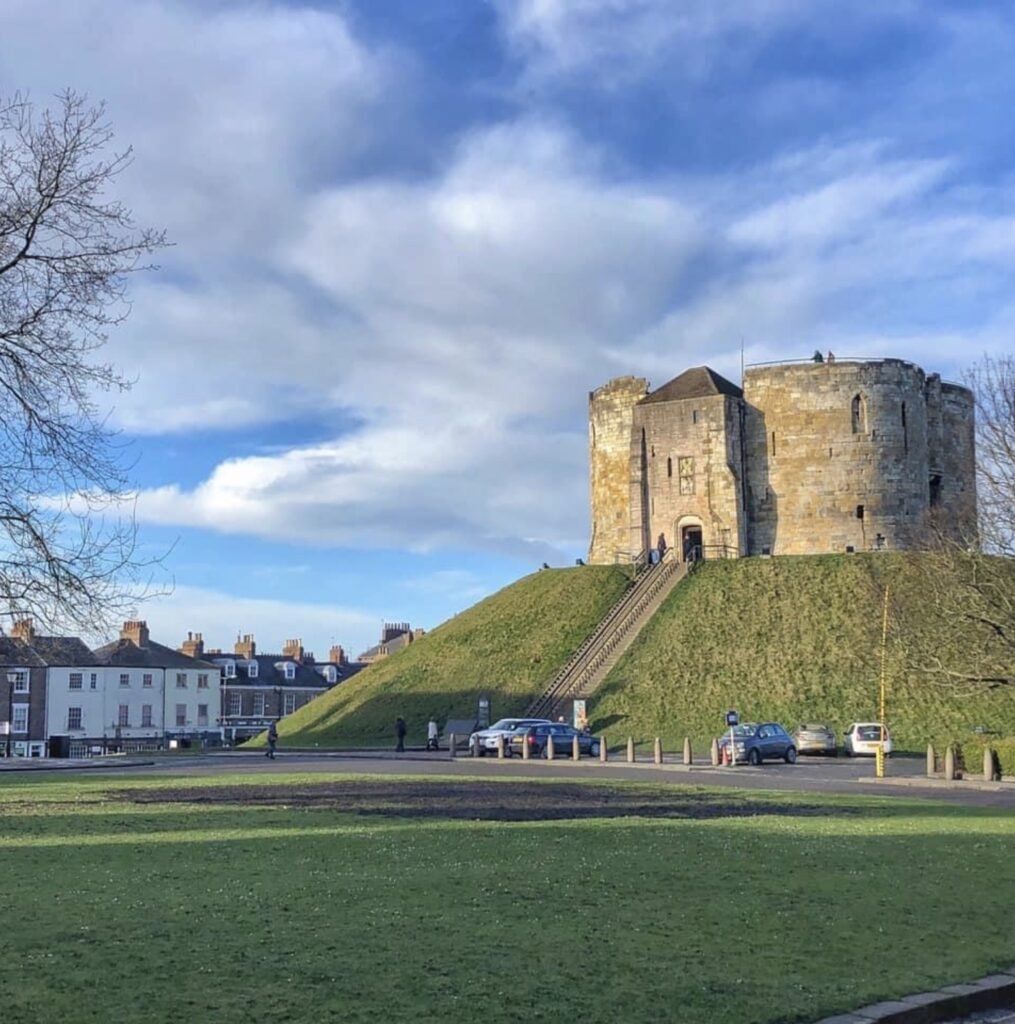
13th Century Clifford’s Tower is a precious remnant of the former York Castle. It was used as a prison on a giant mound.
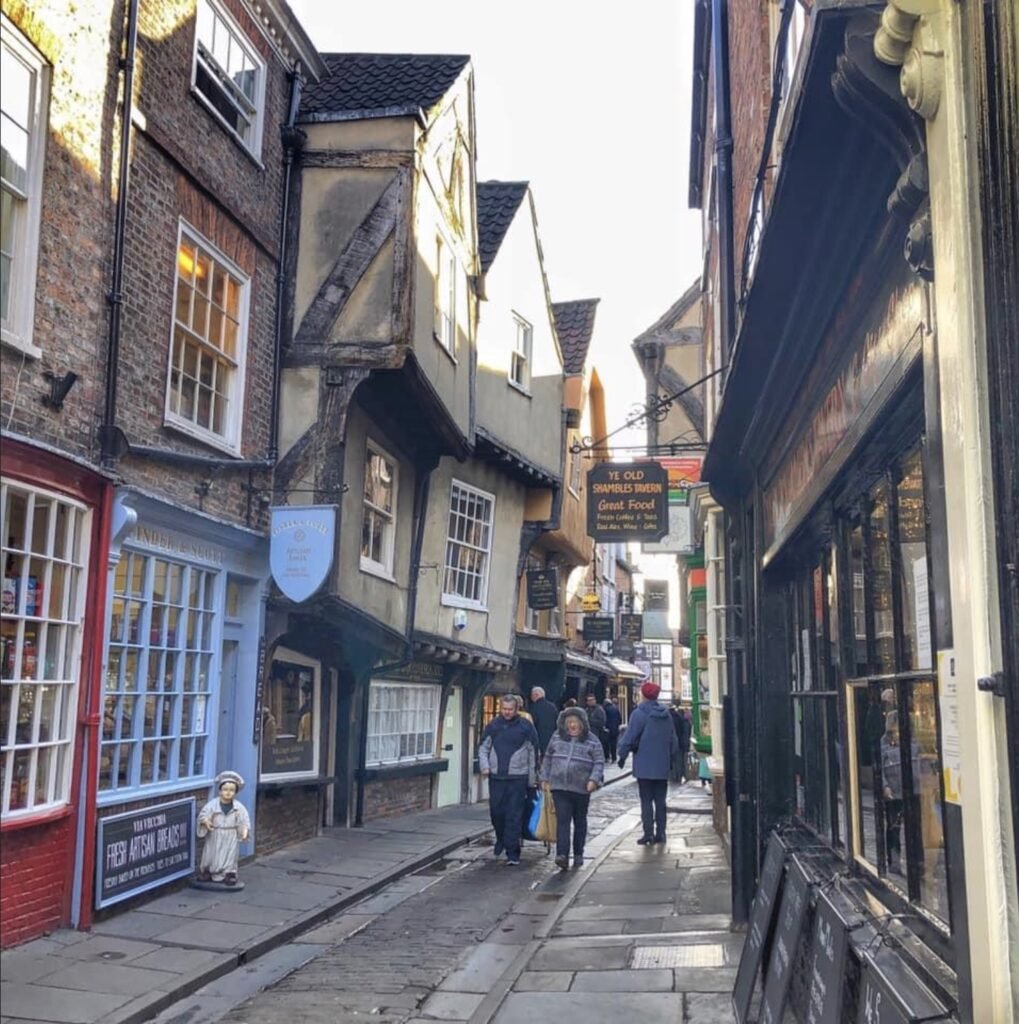
The cobble-stoned alleys known as Shambles is like walking into a storybook with leaning buildings, crooked facades and adorable shops. In summer, it’s usually jam-packed with tourists seeking the perfect kitschy souvenir to stuff in their roller bag. For us, it was thankfully much, much less chaotic in January.

Shambles takes its meaning from the Saxon word “shamel” meaning slaughterhouse, because in 1862 there were 26 butchers on this street.

Another shambles icon.
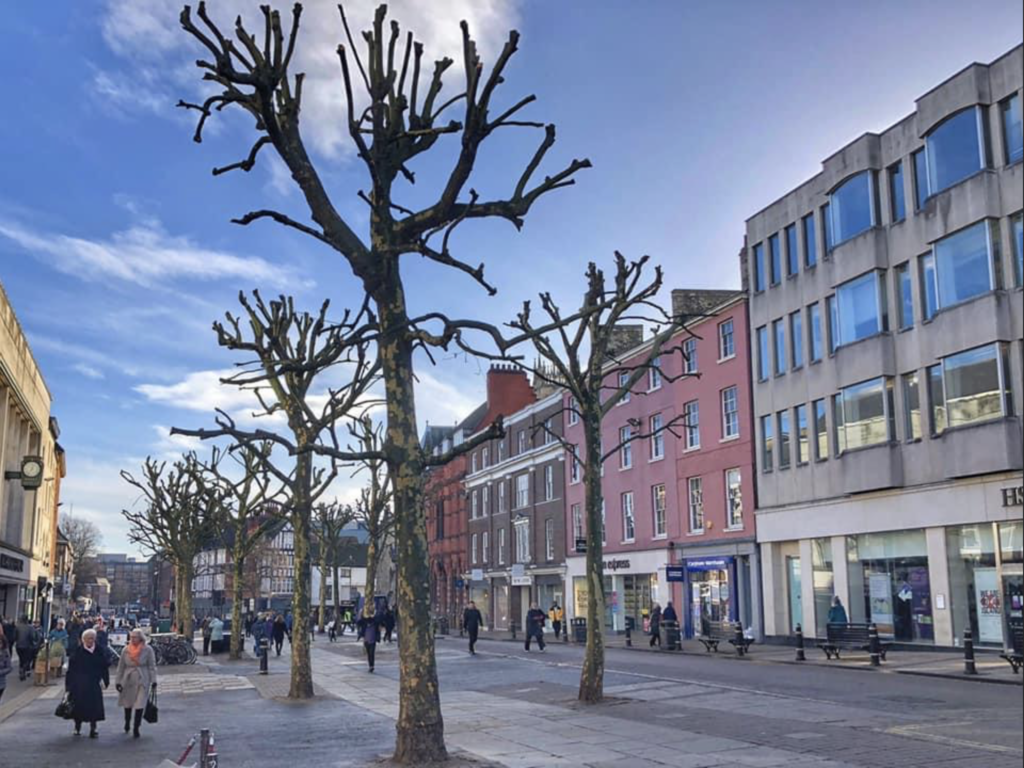
We weren’t sure what to make of these trees on the main walkway…
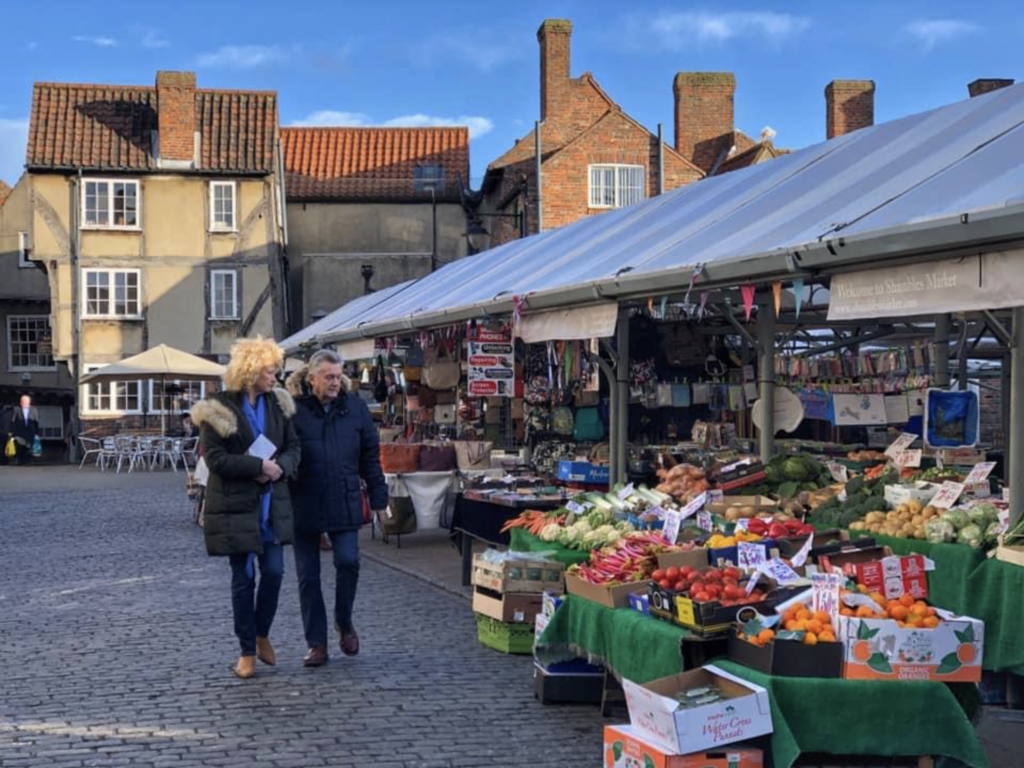
The Shambles Market has abundant hours and is packed with produce, meat, and all kinds of other goods. We had a hard time not stuffing 1£ REAL books (in English!) into our backpacks but reluctantly resisted the urge because of our kindle.
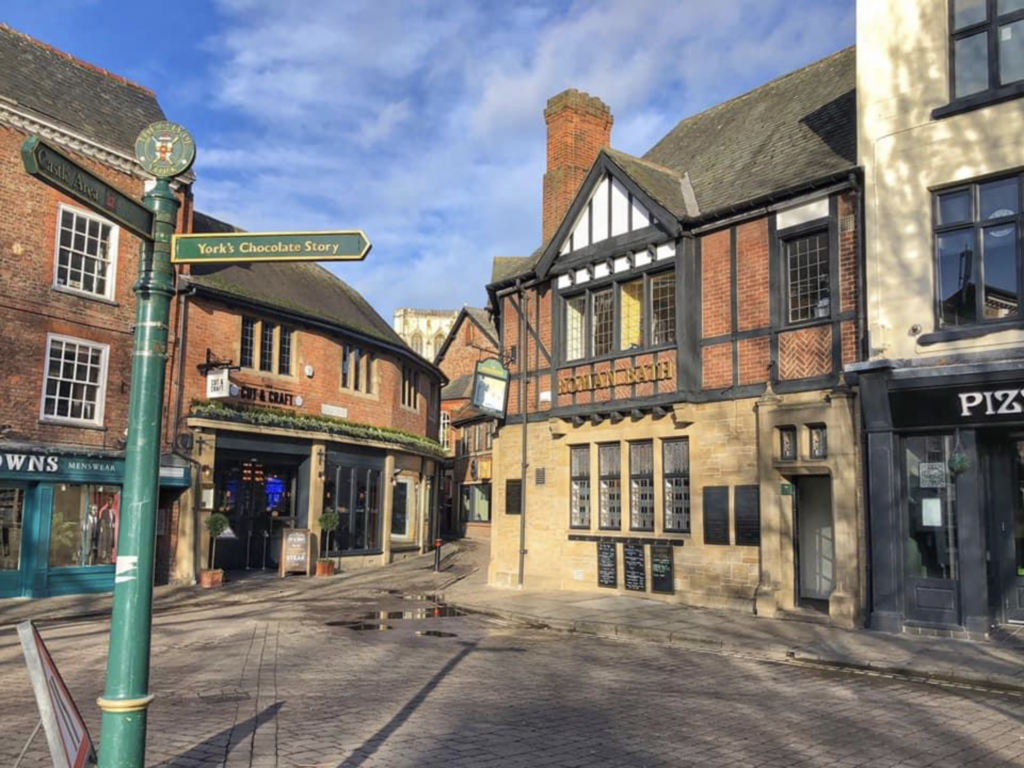
Another street scene, York
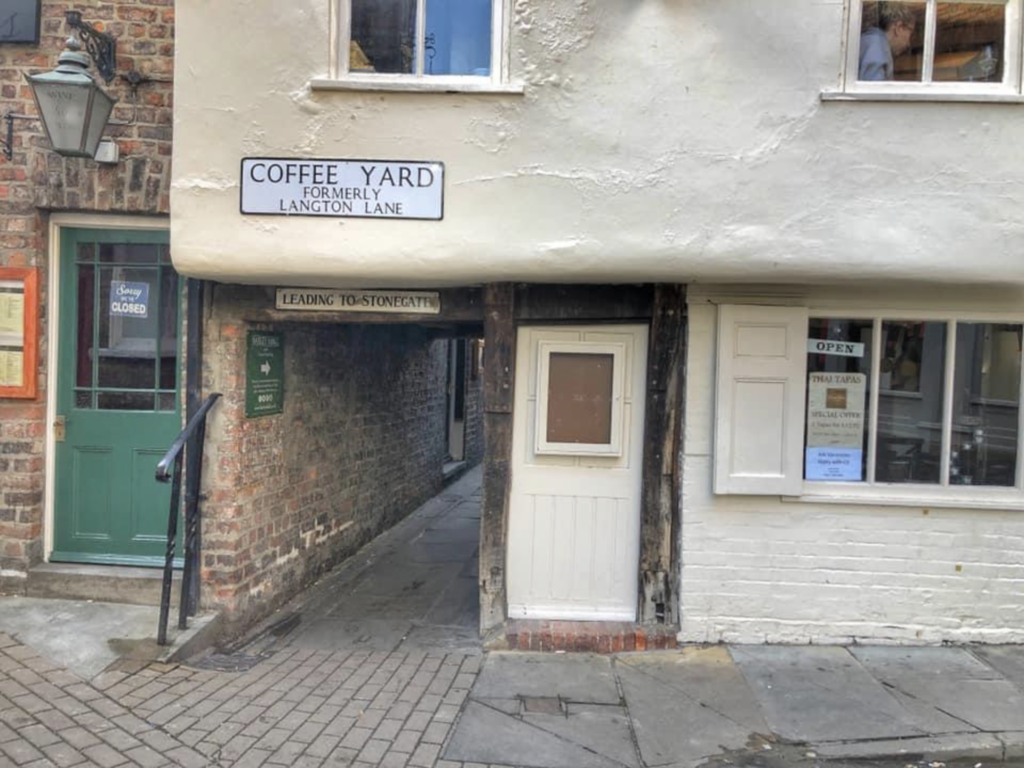
Love the little hidden alleys that connect the streets. So fun to explore!

Mandy met up with a couple of Portland friends who happened to be passing through York. It was a perfect time to try out the institution known as Betty’s for their very famous high tea with clotted cream to go on strawberry scones. Mmm.

Mandy with Laura in front of the York Minster.
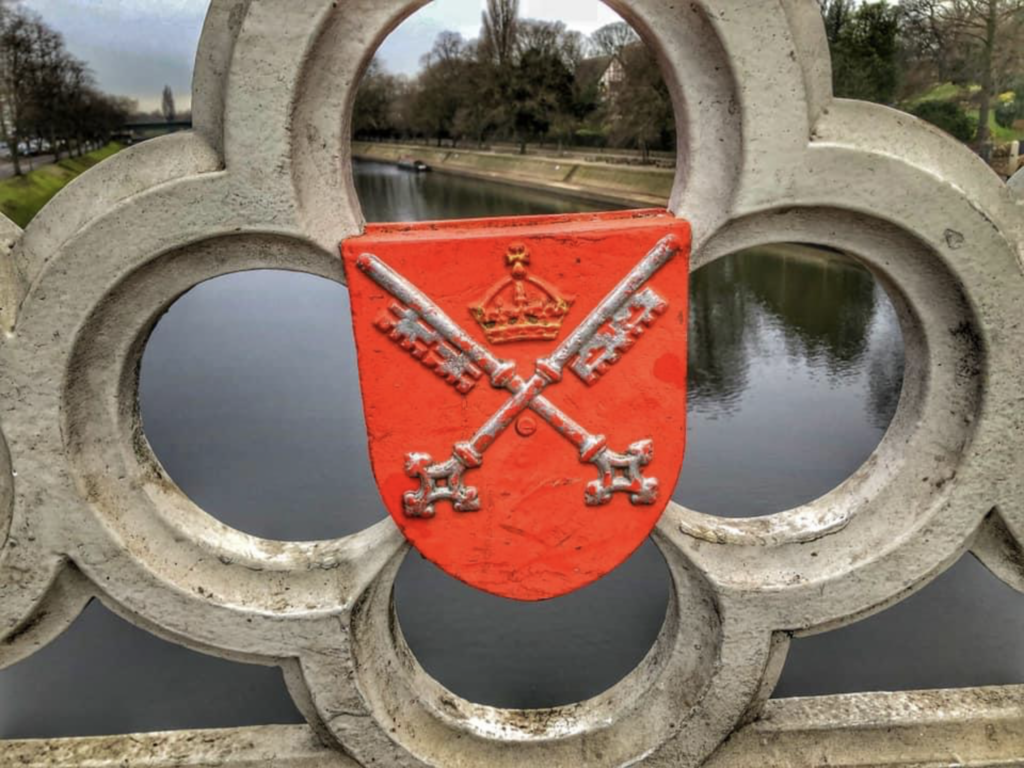
Crossing the River Ouse, we noticed these intricate crests carved into the bridge.

These ruins are all that remains of one of the wealthiest and most powerful Benedictine monasteries in England…St Mary’s Abbey. It was begun by William the Conqueror to reinforce his hold on the north after 1066 and ended by Henry the VIII as a result of his Reformation of the church.

And no trip to York is complete without stopping in the FREE National Railway Museum, which is the biggest in the world with more than 100 locomotives.
- A replica of the oldest ‘modern’ steam locomotive in the world from 1829.
- Packing items to be transported. Wonder what the one in the back is?!
- The mail room
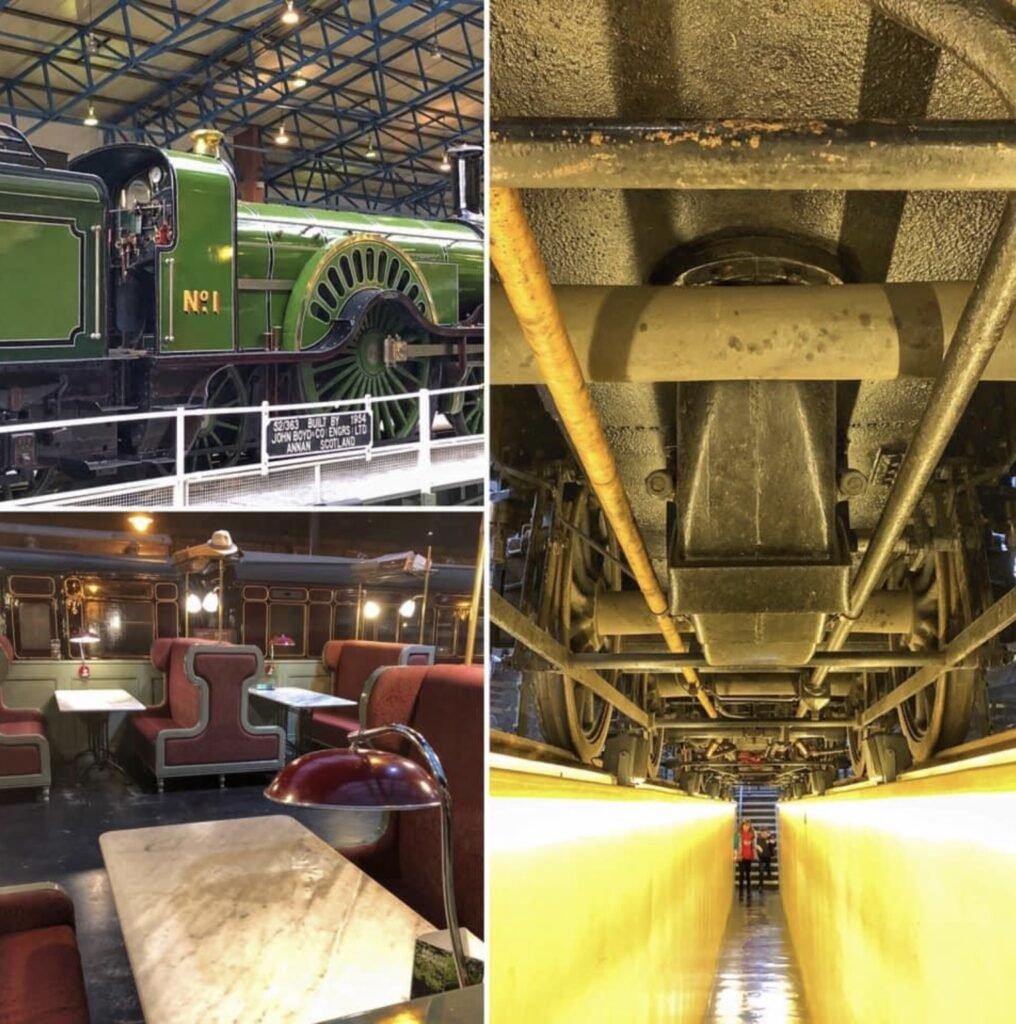
- Look at the size of those…wheels!
- The cafe used what else to sit in? Train seats!
- You even got to walk under a train!



